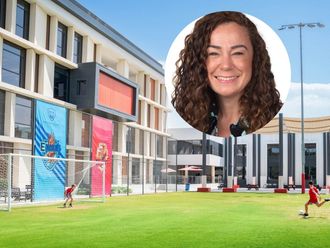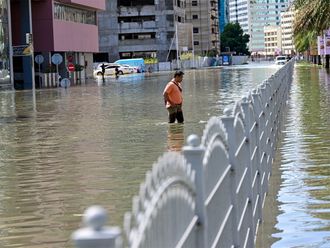Abu Dhabi: King Salman Bin Abdul Aziz Al Saud of Saudi Arabia was the guest of honour at the Union March at the Shaikh Zayed Heritage Festival in Abu Dhabi on Sunday.
The Saudi King who is visiting the UAE as part of a GCC tour watched the parade alongside His Highness Shaikh Mohammad Bin Rashid Al Maktoum, Vice-President and Prime Minister of the UAE and Ruler of Dubai, and His Highness Shaikh Mohammad Bin Zayed Al Nahyan, Crown Prince of Abu Dhabi and Deputy Supreme Commander of the UAE Armed Forces.
The Union March is part of the Shaikh Zayed Heritage Festival’s annual parade, and is a celebration of the UAE and its National Day. This year’s parade expanded its theme of unity to include the UAE’s deep rooted and historical relationship with its neighbour Saudi Arabia.
Shaikh Mohammad Bin Rashid and Shaikh Mohammad Bin Zayed praised the Union March’s participants and their performance that reflect their loyalty to the UAE, as well as the national spirit and cultural diversity of citizens. They expressed their pride in the tribes’ preservation of their heritage and passing it on to future generations. They hailed the Union March and its sentiments of pride and loyalty.
Shaikh Mohammad Bin Rashid and Shaikh Mohammad Bin Zayed reaffirmed that the UAE, under the leadership of President His Highness Shaikh Khalifa Bin Zayed Al Nahyan, is proud of its citizens who diligently work to serve their nation. They stressed that the UAE combines heritage and tradition with its vision for the nation’s future, adopting a balance that achieves development, excellence and innovation in all domains, and preserves the national identity of Emiratis.
The march which included traditional Emirati music and dances, began with several different UAE tribes marching out in alphabetical order, several different Emirati tribes from around the country were gathered for the march. The parade of the tribes was to signify the union of the UAE, with all its different tribes and groups making up the country as one.
Meanwhile, Shaikh Mohammad, accompanied by Shaikh Hamdan Bin Mohammad Bin Rashid Al Maktoum, Crown Prince of Dubai, and Shaikh Hazza Bin Zayed Al Nahyan, Deputy Chairman of the Abu Dhabi Executive Council,toured the Shaikh Zayed Heritage Festival.
He stopped at the heritage neighbourhoods where 18 countries, including the UAE, are showcasing the daily lives of the world's ancient civilisations, along with traditional cuisines and national heritages.
Shaikh Mohammad praised the festival as a melting pot for Arab and global cultures, and a key contributor to efforts aimed at instilling national loyalty and identity in young generations, to be proud of their national, Arab and Islamic identity.
He said that he hoped the annual cultural gathering would help organisers to present the UAE's culture and heritage to visitors.
Following the march of the tribes was the Arabian horse and camel parade, which had several impressive horse riding skills performed by the Emirati riders. The two animals were chosen because of the deep affinity the UAE has towards them, both animals are seen as holding an important cultural aspect of the UAE.
The Union March was then concluded by a rousing poem that was given in front of all the leaders and audience in attendance, with the poem speaking on the themes of patriotism, unity, strength, and the friendship between the UAE and its fellow Gulf Arab Neighbours.
The month-long festival will run until January 1. From live performances, horse shows, date and classic car exhibitions, funfair for children to cooking classes and traditional Emirati crafts as well as crafts from around the world, there is something for everyone.
The festival’s enormous grounds, which can easily take an hour to walk around, is divided into three neighbourhoods, GCC, Arabic and International.
The organisers have placed emphasis on the world’s heritage, and it is evident in the 18 cultural districts that are available at the event.
Each district represents a different country including the UAE, Kuwait, Kazakhstan, Afghanistan, Oman, India, Russia, Serbia, and China.
The areas are carefully designed to reflect each country’s architectural heritage as well as present its crafts, products and authentic cuisine. A purpose-built stage in each district offers traditional shows for visitors in an intimate atmosphere.











